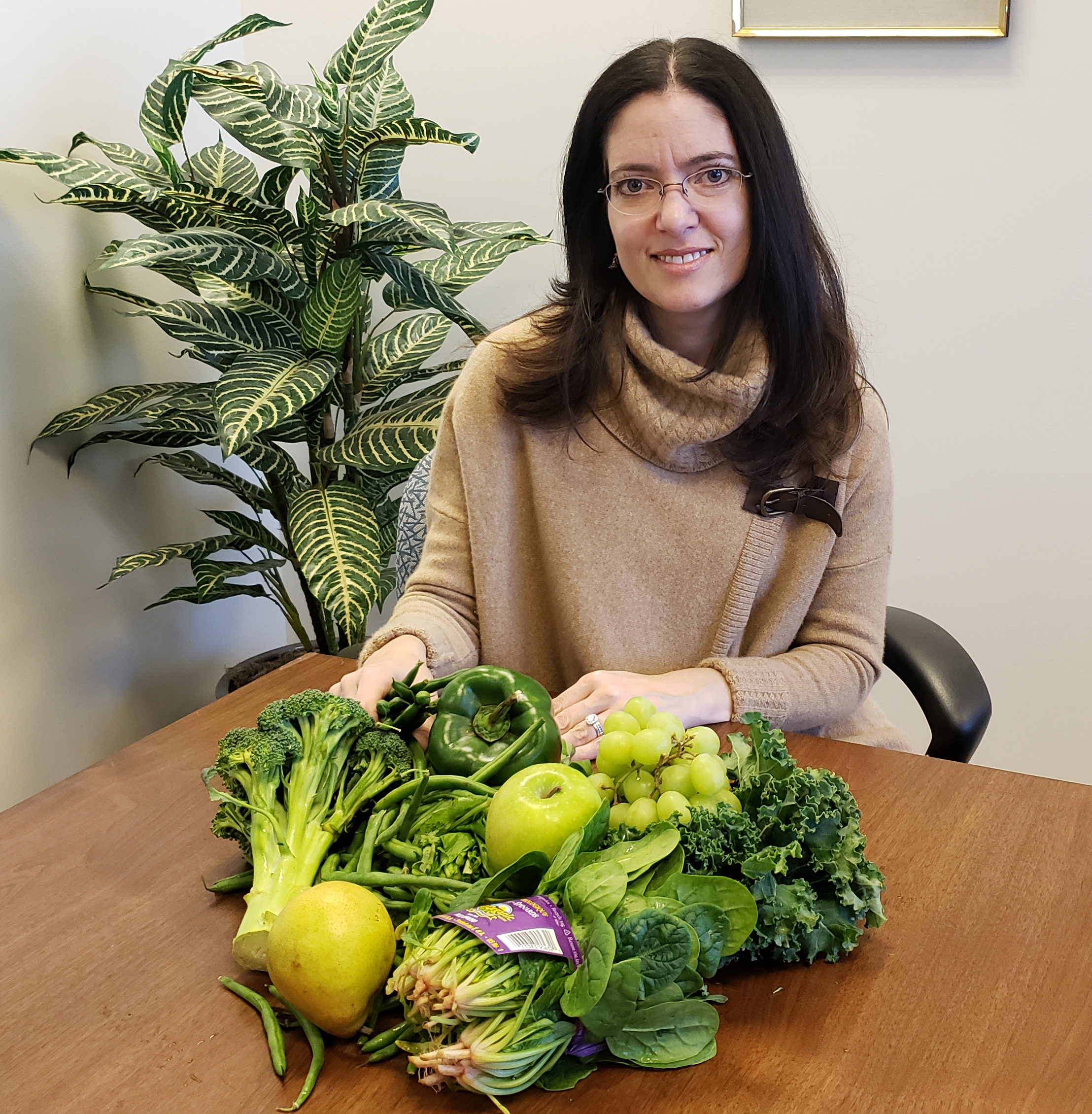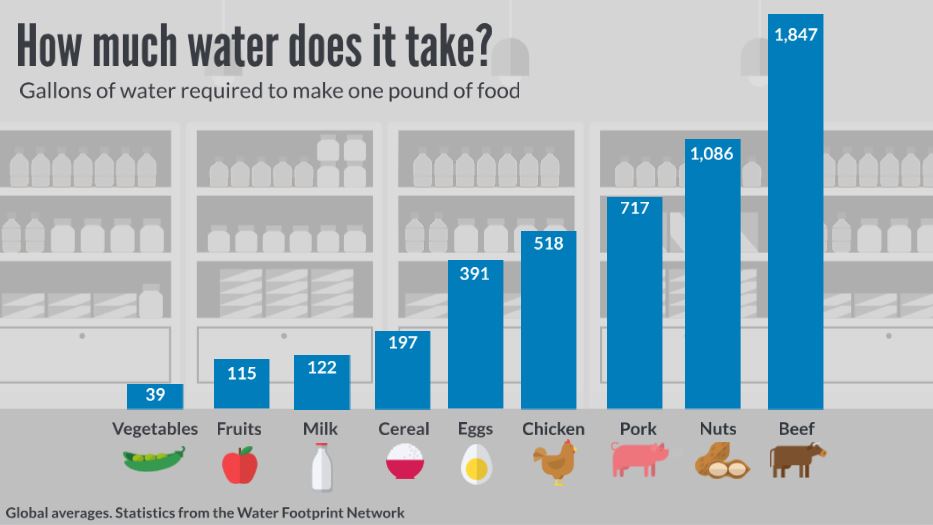How Much Water Does the Beef Industry Take
Video
What'due south the beef with water?
Don't have a moo-cow human. Meliorate your wellness by reducing your h2o footprint.
Footprints can be seen in lots of places — in the sand, in the snow, on the moon, even in our h2o.
Wait, in our h2o?
That'south right, though it's not exactly what you call up. A water footprint is like an environmental or ecological footprint. A h2o footprint accounts for the water used in the agricultural, packaging and shipping processes used to produce the nutrient you consume.
And since our employees at Denver Water eat, beverage and exhale water (okay, probably simply drinkable, merely you get the point) it'due south only natural that h2o footprints would be a focus in our wellness program.
Denver H2o's employee wellness programme includes voluntary challenges throughout the year, each one typically lasting three weeks. The challenges have goals such as ditching fast food, drinking more water and getting more practice.
This month, employees are existence challenged to try a plant-based nutrition. It'due south a diet that emphasizes minimally processed foods from plants and includes healthy proteins similar nuts, seeds, beans and tofu. It likewise allows for pocket-size amounts of animal products like fish, lean meat and low-fat dairy.
Limiting the consumption of beast products has many positive wellness impacts similar lowering cholesterol and blood force per unit area and helping to prevent chronic diseases.
Only here's where the water footprint comes in. Do you know what food has the largest global h2o footprint? Beef.
It takes approximately 1,847 gallons of water to produce one pound of beef — that'southward enough water to fill 39 bathtubs all the way to the summit.
For only one pound of beefiness? How can that be possible?
A beef moo-cow eats thousands of pounds of grass, corn, grains and soybeans during her lifetime, and h2o is necessary to grow this diet. That'south why the product of animate being products like meat, dairy and eggs requires more water than producing fruits (115 gallons of water per pound) and vegetables (39 gallons of water per pound).
So, when nosotros inquire our employees to make healthier choices when eating, nosotros not only contribute to our employees' overall wellness, but nosotros assistance reduce the global footprint of h2o. And since nosotros're a water utility dedicated to water conservation and efficiency, that'southward what nosotros phone call a win-win situation.
If yous'd like to join our employees this month in improving your health and decreasing your global h2o footprint, hither are a few tips:
- Avoid wasting nutrient.
- Reduce the amount of processed foods in your diet.
- Limit the corporeality of animal products y'all eat and give a plant-based meal a endeavour.
- Choose pasture-raised brute products when you can.
Of form, this isn't for everyone, and eating a burger or steak doesn't mean you're wasting water.
Simply if you want to reduce your global water footprint with the foods you eat, try reducing your beef intake for a while. You might find it to be a mooooo-ving feel!
And if you want to decrease your water footprint hither in Colorado, in that location are plenty of other things you tin do to use water efficiently.
flannagananert1992.blogspot.com
Source: https://www.denverwater.org/tap/whats-beef-water


0 Response to "How Much Water Does the Beef Industry Take"
Enregistrer un commentaire